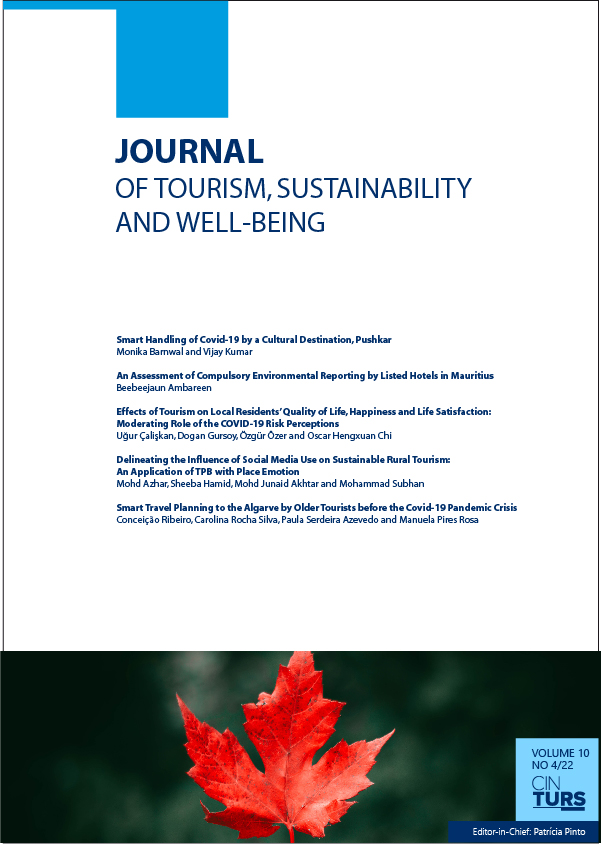Delineating the Influence of Social Media Use on Sustainable Rural Tourism: An Application of TPB with Place Emotion
DOI:
https://doi.org/10.34623/1ta2-yj22Keywords:
Theory of Planned Behaviour, Rural Tourism, Sustainable Tourism, Social Media Use, Place Emotion, Behavioural IntentionAbstract
The present study unveils the factors affecting the potential behaviour of tourists to visit rural destinations. It also intends to measure the influence of the theory of planned behaviour (TPB) on tourists’ intention to travel to rural destinations, incorporating two additional constructs: social media use and place emotion. Moreover, this study unwraps the most influential factor affecting tourists’ potential behaviour to visit rural destinations. An online questionnaire was utilised to gather the data, and 415 complete and usable responses were included in the analysis. The population of the survey includes Indian tourists. SPSS 20 and AMOS 22.0 software were used to analyse the data. The hypothesised model was tested using structural equation modeling (SEM). The empirical results reveal that attitude towards rural tourism, subjective norm, social media use and place emotion significantly and positively influence intention to travel to rural destinations, while perceived behavioural control does not. The effect of social media use was found to be the most substantial among all the factors. The proposed model explains approximately 50% of the variance in the intention to visit rural destinations. Several theoretical and practical implications can be delineated from the findings of the present study.



